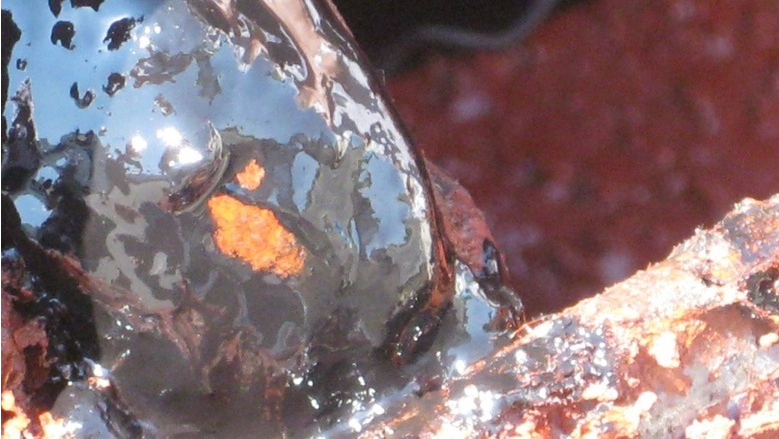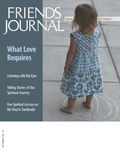
When I arrived at the campus for this year’s Friends General Conference Gathering, the first thing I did after unpacking was walk around to see what caught my eye and what might catch the eyes of the students in my Contemplative Photography workshop. The grounds of the University of Northern Colorado as a whole seemed a little too neat, too green, too well cared for. Even the dumpsters were bright and shiny, nothing like the rusty and well-worn dumpsters at last year’s Gathering at the University of Rhode Island. Would there be the textured and irregular surfaces here that I was looking for?
The assignments for the first two days of the workshop were intended as an opening to a different and unconventional approach to photography. Instead of shooting or taking photographs, participants were invited to receive images, to listen with their eyes. Instead of thinking about what would make a good photograph, they were asked to set aside their thoughts and judgments, soften their gaze, let images come to them, and rest in awareness of what was in front of them without wanting to change it. Some astonishing images began to emerge and were shared on the class website.
For the first two days, students were out photographing on their own. The third day’s assignment was a group assignment, and so I wanted to find a site on campus beforehand that would fit my guidelines. It turned out to be a major challenge, and it took me several days to find what I was seeking. Away from the main part of the campus, a new running track was being constructed in the university stadium. The staging area in a nearby parking lot was full of possibilities: a very large tractor trailer with some small but noticeable imperfections, a number of tall white bags with green ties, some curiously shaped translucent containers filled with an unidentified liquid, a rough concrete stanchion on its side, and broken and stained asphalt.
I named the third assignment the “Wabi-sabi assignment,” after the Japanese art of finding beauty in imperfection and impermanence. The two words are usually joined together, but they have separate meanings: “wabi,” quiet contentment with simple things, and “sabi,” the graceful aging of things, like weathered wood or an old vehicle left out in a field.
We walked in silence to the unannounced site at the far end of the campus, where I was quite certain no one had been: the track construction staging area. When we arrived there, I was amazed to find a new object had appeared overnight. A cardinal rule of contemplative photography is to be ready for the unexpected, but what I saw parked next to the white bags with the green ties was a complete surprise: an aging compact Bobcat loader splattered with red paint and rust. On its back end was a toolbox that had been lovingly duct-taped together and was likewise coated in red paint.
Everyone dispersed into the assigned area. For the first 15 minutes I directed the group to set aside the cameras and just look in a relaxed way at whatever was in front of them, perceiving color, texture, pattern, line, light, and shadow. After the 15 minutes of relaxed looking and seeing, each student could pick up a camera. I asked everyone to see with fresh eyes not what they had seen previously, but what they were seeing now. After another 15 minutes and 20 or so photographs, we retreated to a shady area with benches to process what had just happened. All seemed astonished at what they had seen and at the images that they had received and recorded. Those who had noticed the red toolbox admired its humble and timeworn grace.
Two more assignments followed: the simplicity assignment and the winnowing assignment, both exercises in visual discernment. Discernment takes on a different meaning when paired with a visual element; the practice becomes a more literal interpretation of the word’s Latin root, “to distinguish, separate, sift.” Students were asked to take to heart the painter Hans Hofmann’s remark that “the ability to simplify means to eliminate the unnecessary so the necessary may speak.” During the course of the week, we had been posting and sharing our images on the class website. For homework on the fourth day, the assignment was to each separate out ten of our best images.
On the fifth day, we had to winnow the ten down to three. We were first invited to listen to our images with soft eyes, eyes that are receptive and fully awake rather than judging and analytical. Which images spoke to us? Which had energy? Which needed to be shared with others? The final step was to enter into dialogue with a discernment partner, to help gain further clarity about which images to release to a larger viewing audience.
In our final worship sharing, someone noted that what we had accomplished during the week could not have happened alone or out of a book. We had all been through a unique experience of community, a communal sharing and shaping of images. It was, in singer Carrie Newcomer’s words, a true “gathering of spirits… a festival of friends.”













[…] Listening with the Eyes: Photography as Contemplative Practice […]